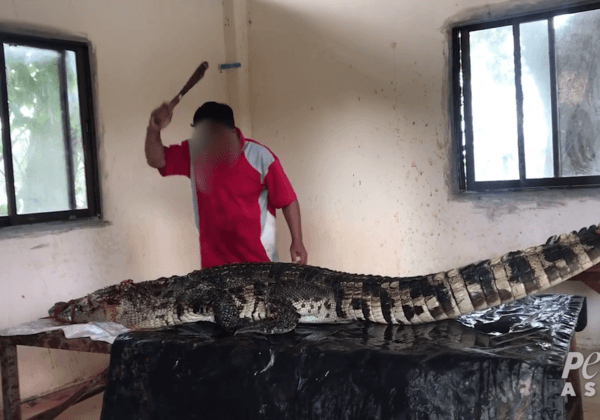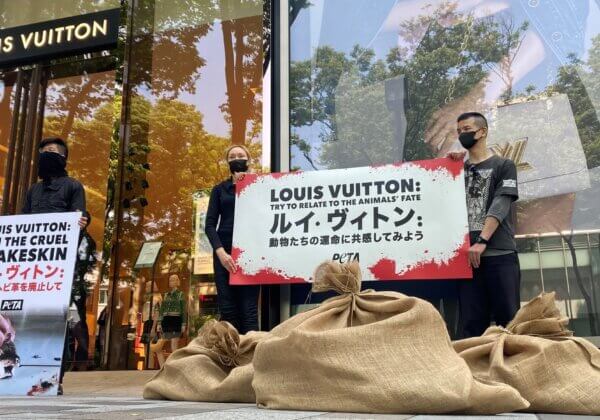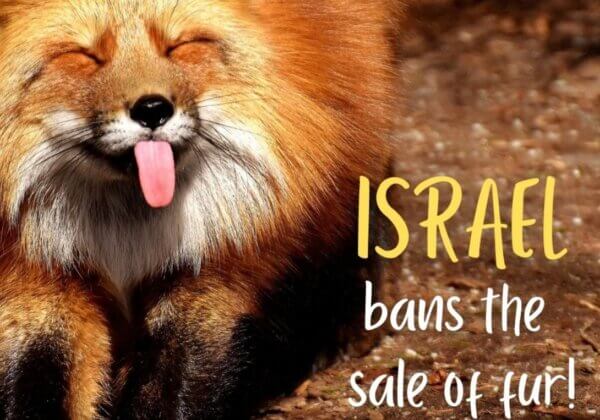Exposed: Juvenile Ostriches Butchered for Hermès and Prada ‘Luxury’ Bags
In September 2015, PETA U.S. investigators traveled to South Africa to get never-before-seen footage inside the largest ostrich slaughter companies in the world, including the exclusive supplier of ostrich skins for Hermès Birkin bags. Investigators saw workers roughly handle terrified ostriches—causing many to slip and fall—force them into stun boxes, and then slit their throats. The ostriches next in line watched helplessly as their flockmates were killed right in front of them.
Workers were caught on camera striking ostriches in the face during transport, and when ostriches stumbled over a collapsed flockmate outside a slaughterhouse, a plant director joked, “I’ll call the animal welfare officer just now.”
These slaughterhouses supply ostrich skins to Hermès, Prada, Louis Vuitton, and other top European fashion houses. Feathers, some of which are ripped out of the ostriches’ skin while they are fully conscious, are used in costumes for the Moulin Rouge and festivals like Brazil’s Rio Carnival as well as in feather dusters, boas, and accessories. Ostrich meat is also sold throughout South Africa and exported primarily to Europe.
South Africa: The Ostrich-Killing Capital of the World
The Western Cape of South Africa is home to the largest ostrich slaughter companies in the world, which supply “luxury” ostrich skins to Hermès, Prada, and other major fashion houses.
The PETA U.S. investigators saw the juvenile birds tightly packed into open-topped vehicles for the terrifying journey to slaughter. Once they reach the slaughterhouse, workers forcibly restrain each bird, electrically stun them, and then cut their throats. Moments later, the feathers are torn off the birds’ still-warm bodies and they are skinned and dismembered.

After being processed with chemicals to prevent decay, ostrich skin is ready for sale.

The feathers ripped out of ostriches’ skin are used for costumes for the Moulin Rouge and festivals like Brazil’s Rio Carnival.
The Intelligent Ostrich: Far From a ‘Fabric’
While ostriches can live for more than 40 years, farmed ostriches are slaughtered when they are just 1 year old. And while young ostriches typically stay with their parents for up to three years, ostriches raised on factory farms will never even get to meet their parents.
In the wild, these intelligent birds share parental duties, with the camouflaged mother taking care of the eggs during the daytime and the father, who has black feathers, taking night-time duty. One farm manager told our investigators that he has seen ostriches take turns fanning each other on hot days, remarking, “I have a lot of respect for ostrich.”
What You Can Do
Your choices make a difference—the easiest thing you can do to help animals is never to purchase ostrich or any other animal skin or feathers. If we all stand together, we can end the demand for animal skins in the fashion industry and stop animal suffering! Share this post with your friends and family, and encourage them to opt for cruelty-free fashions.









